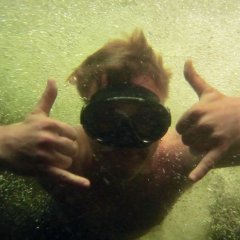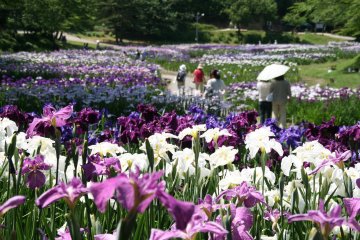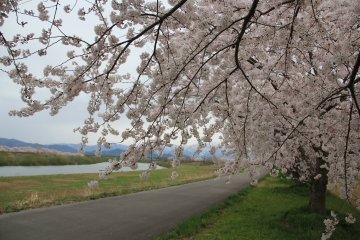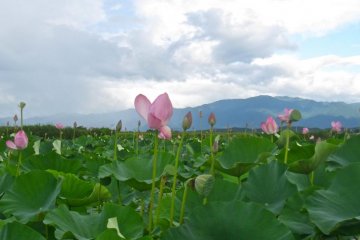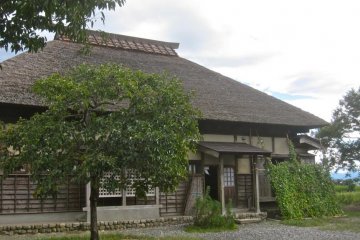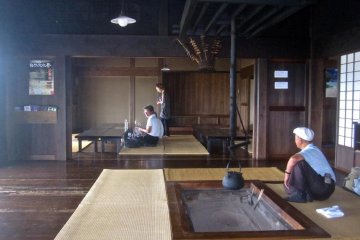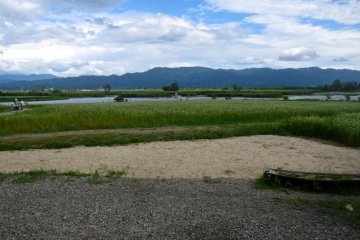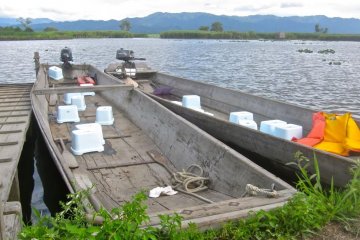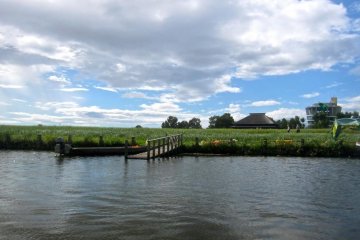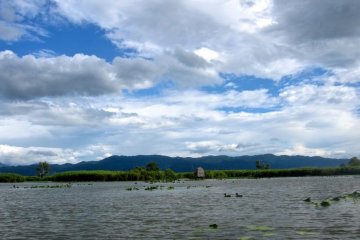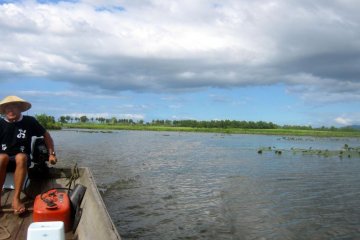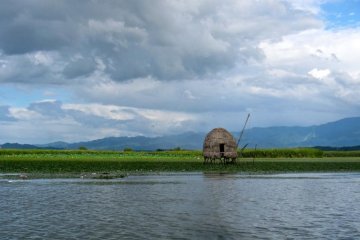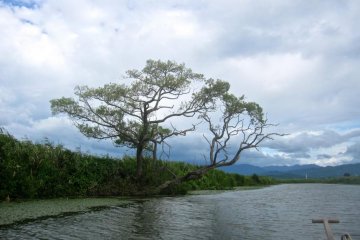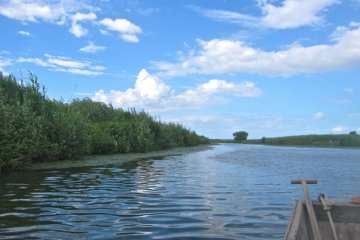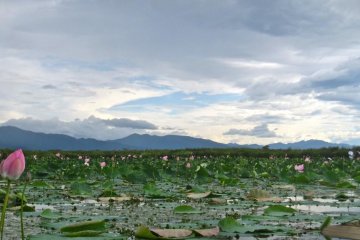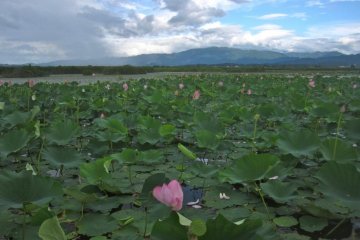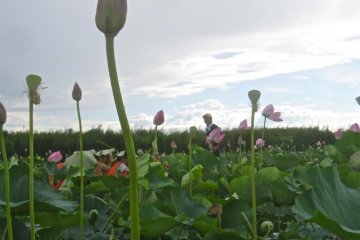The Japanese word gata (潟) means lagoon or lake, and there are quite a few of these “lagoons” all over the Niigata (New Lagoon) City area. One of the most scenic is Fukushima-gata in the former town of Toyosaka, a 20 or so minute car ride north of downtown Niigata.
The people of ages past once made a living farming the fertile ground around Fukushima-gata and fishing from its waters. The whole area has been turned into an outdoor nature and history park and museum. A reconstructed (or refurbished) house with sheds for storing firewood, stick and log fences for drying out thrush for the roof or grain for the table offers a hands on glimpse into the way of life that once was. The lush green lawns and water plants, allowed to grow naturally, provide an ideal habitat for a wide range of local birds and other wildlife. A walk on one of the park’s many trails is bound to be pleasant.
A nice long walk was my reason for visiting Fukushima-gata, but as I approached the lakeshore my attention was captured by two wooden longboats tied to a dock. Turned gray and worn smooth by years of use and exposure to Niigata weather, the only thing to let me know that these boats were modern replicas and not relics from centuries past was the outboard motors clipped to their sterns. The boats and the small queue of people gathered near the dock put any thoughts I had for a walk on indefinite hold.
“Do I need a reservation to ride the boat?” I asked an older man in a yukata uniform and straw “kasa” hat.
“No, you just need to pay ¥700.”
I handed over the money, and joined the 3 or 4 other passengers on the ¥100 store plastic benches that serve as seats. Out on the lake the cooler air kept the blazing early September heat at bay and the scenery recalled me to landscapes more familiar to my American eyes. The tall cattails and narrow passages between them conjured images of air-boating in the Everglades of Florida.
The boat took me and my fellow passengers on an hour or so long circuit of Fukushima-gata. We stopped once to look at a pool full of endangered purple Onibasu (Gorgon) flowers, traveled up and down many cattail and water grass lined channels, and passed several domed yurts made of wood and straw that rose out of the lake on stilts, reconstructions of fishing and bird hunting blinds used by the residents of old. Near the end of the tour the guides steered us into a floating meadow of “hadzu,” a kind of water lily with large leaves and enormous pink flowers that grow a full meter out of the lake.
“Pick one if you want,” the guides told us. And we did. The leaves made very effective umbrellas when a light sun shower caught us out in the middle of the lake. We passed through more than one meadow of hadzu where the flowers and leaves stretched out as far as we could see on all sides before circling back to the dock. Watching the sun sink toward the horizon on the walk back to my car was enough of a stroll through nature for that day. I’ll still be returning for that longer walk though.
Fancy a boat ride? The Fukushima-gata boat ride is open from Golden Week to the first weekend in September Fridays, weekends and holidays only, no reservations required. Take the family! It’s an easy adventure. Happy travels!


